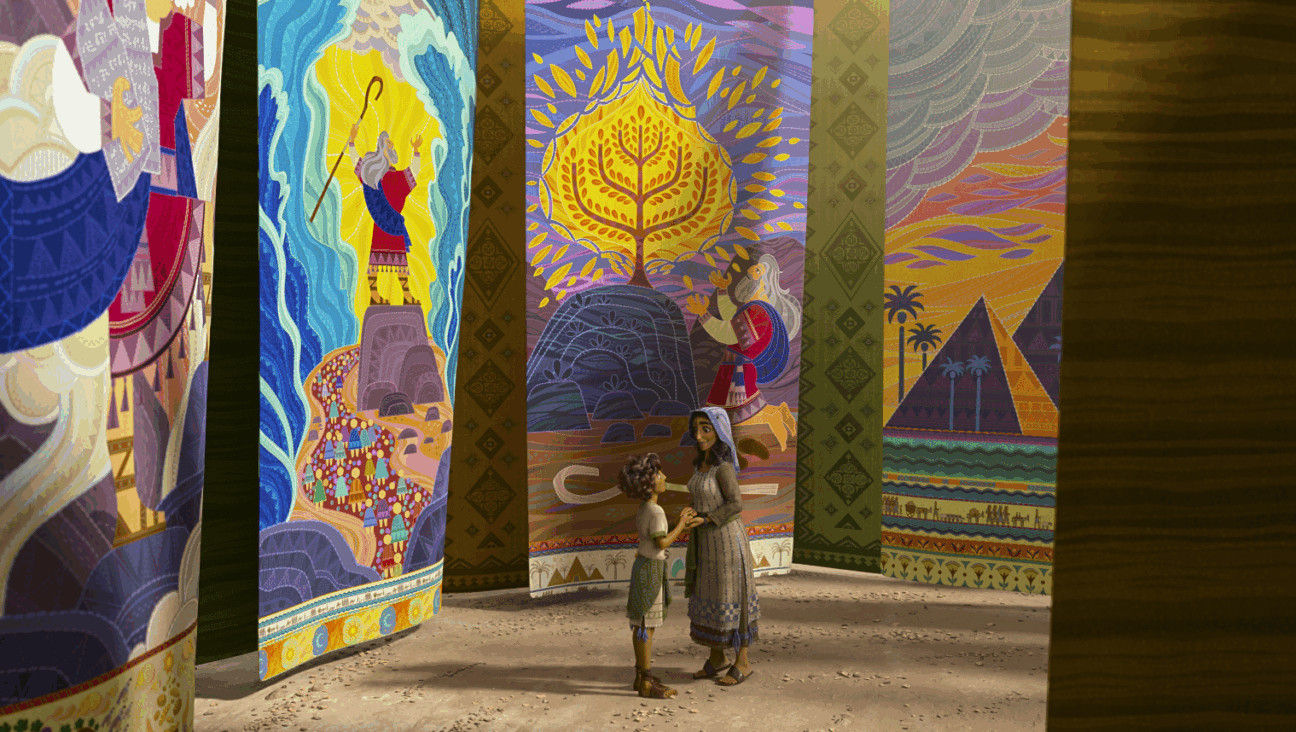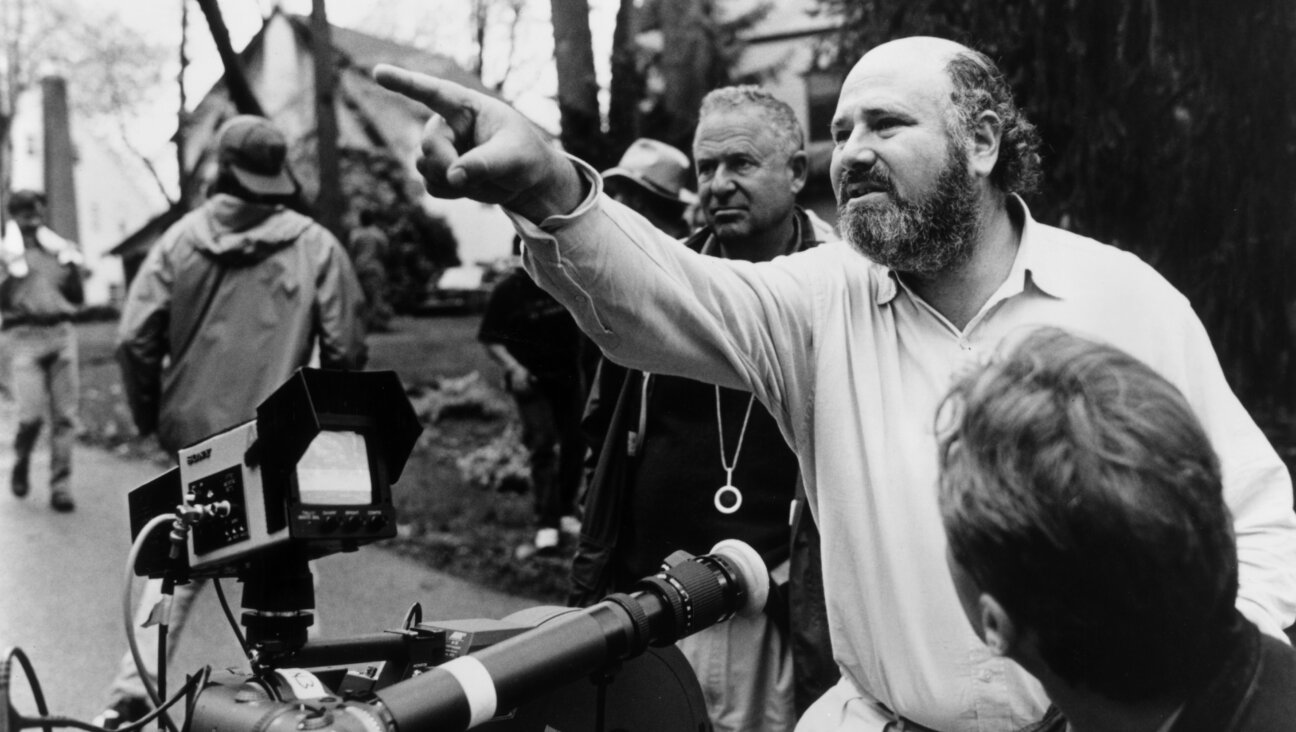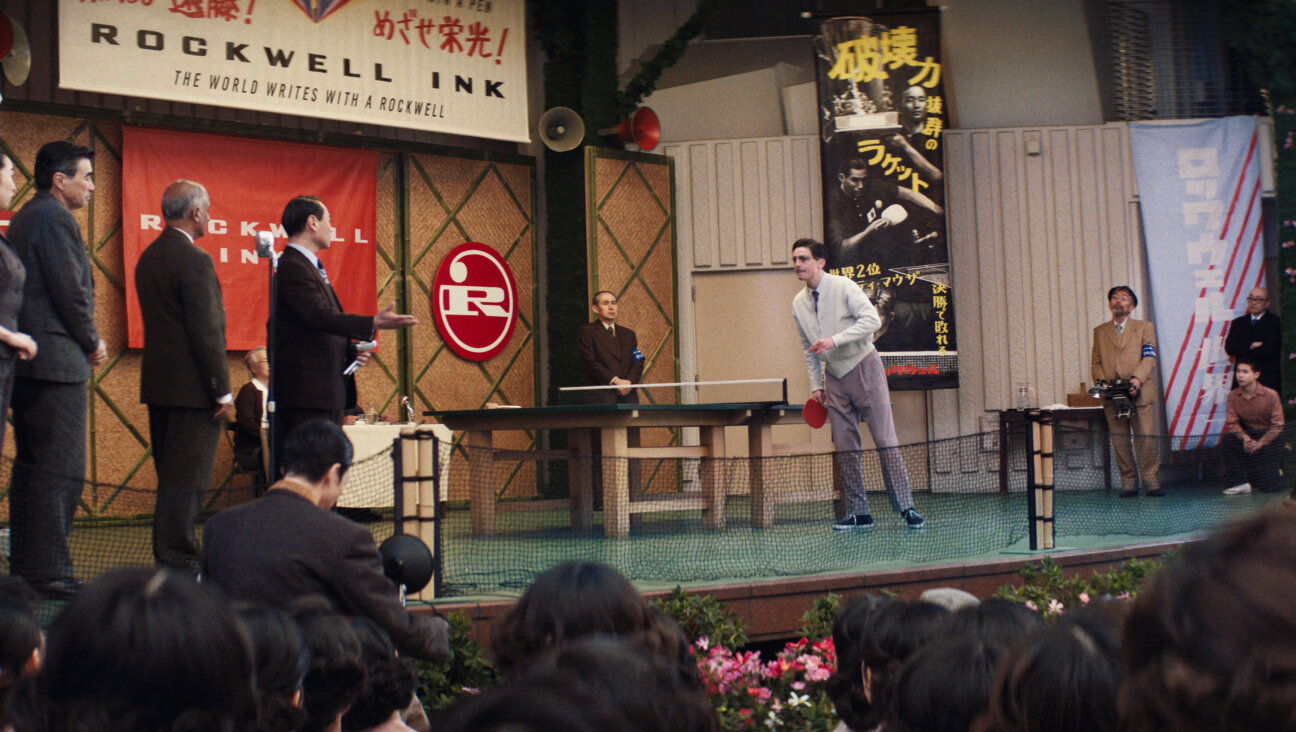Why The New ‘Ben Hur’ Is the Least Successful Adaptation Of All

Graphic by Angelie Zaslavsky
“Ben-Hur: A Tale Of The Christ” was the best-selling American novel of the nineteenth century, beating out “Uncle Tom’s Cabin.” There were a million copies printed of the 1913 edition, an American record at the time. It would stay on the top of the charts (just under the Christian bible) until “Gone With The Wind” surged past it in 1936. But the novel would become a bestseller again in the wake of the 1959 film starring Charlton Heston.
The Heston film, directed by William Wyler, was a huge success, winning 11 Oscars. But the novel had already become a cultural force that, in modern terms, can only be compared to “Star Wars.” In the early 1900s, it was possible to purchase Ben-Hur branded flour, perfume, and even cars.
It has been adapted for the screen six times. The last version, of course, being the 2016 critical and commercial flop that is still in theaters. It is far and away the weakest, mainly because it attempts to soft-peddle the conflict between Judaism and Christianity that inhabits, to some degree, all previous versions.
Richard Brody recently noted that it isn’t really possible to reboot Tarzan, a story so loaded with racism and colonialism that to sanitize it is to destroy it. Something similar can be said of “Ben-Hur.” It is, at the end of the day, a story about Judaism transforming into Christianity. You can try to make a version of the story without that element, but if you do, you aren’t really making “Ben-Hur.”
The genius of the (usual) story is in the way it weaves together the tale of an angry Jew on the warpath, and the legend of Jesus. The reader is led to identify with Judah Ben-Hur, a Jewish prince living in Judea under Roman rule. Judah’s childhood friend, a Roman named Messala, is a high-ranking officer in the occupation. Judah, watching a Roman military parade from a rooftop, accidentally loosens a tile that falls on a big shot’s head. (In some versions, the big shot in Pontius Pilate.) Messala has the chance to defend his friend, but instead demonstrates his own loyalty to Caesar by condemning Judah to life as a galley slave, and imprisoning Judah’s mother, Ruth, and his sister, Tirzah. Judah must also leave behind his love interest, Esther (who is also his slave), and her father, Simonides.
Judah escapes the galleys, and (in most versions) saves the life of Arrius, a wealthy Roman, who adopts him. With recovered wealth, status, and (in some versions) military training, Judah seeks Messala for revenge. The climax comes in the form of a chariot race that has become emblematic of the story itself. (In 1899, a live stage adaptation debuted on Broadway, with horses running on treadmills.)
Spoiler alert: Judah wins. Sometimes Messala dies from injuries sustained in the race.
But the victory is hollow. Ruth and Tirzah, during their long imprisonment, have become lepers. Judah’s family has (we think) been ruined forever.
“It goes on,” says the dying Messala in the 1959 film, with “it” meaning the cycle of hate and vengeance. Messala has, in a perverse sense, dominated Judah, by ruining the lives of his loved ones.

Image by Amazon
In Hollywood screenwriting dogma, there is an idea that most movies have two endings: the “false resolution,” followed by the “true resolution.” In most versions of “Ben-Hur,” the false resolution is the aftermath of the chariot race, in which Messala lies broken, and Judah is triumphant. The true resolution comes a bit later.

From the 1907 silent adaptation, the only version in which Jesus does not appear. It ends right after the chariot race. Image by YouTube
Another staple of Hollywood storytelling is that every hero has a clearly defined “want,” as well as a “need.” These two things are often at odds, thus creating the underlying tension in the mind of the viewer. Ben-Hur wants vengeance. But he needs to find some other direction in life.
In the case of Ben-Hur, the writer offers a solution. As Judah’s main story winds down, the crucifixion of Jesus is at hand. Judah encounters Jesus on the march to his execution, sometimes acting as the good Samaritan who helps him up when he stumbles under the weight of the crossbeam. Judah is touched by the Nazarene’s passion. Shortly thereafter, as JC rises to heaven, Ruth and Tizrah are healed of their leprosy.
And Judah, seeing this, becomes one of the first Christians. That’s the true resolution.

A Hint of the World To Come: Judah embraces his mother and sister, in the 1925 silent version. Although most of the movie is black and white, some scenes, especially toward the end, were color-tinted and toned, as if to suggest the beauty of the newly Christian world. Image by Amazon
Reading Ben-Hur (the novel), I was reminded of Neil Gaiman’s short story, “Murder Mysteries.” It takes place before the creation of the Earth, and it’s about one angel killing another: the very first murder. Raguel, the angel of vengeance, acting as a sort of proto-detective, must come to understand, not just this specific crime, but the very idea of crime. The murder of the angel, like Judah’s vengeance against Messala, is presented as an act committed just before it became a crime. It’s almost as if the act itself gave birth to the new morality.
“Murder Mysteries” might be considered a bookend standing at the left end of Jewish history; at the right end of which (Lew Wallace would have liked us to think) is “Ben-Hur,” which is about the final act of righteous vengeance, struck just before the nature of morality changes, and vengeance is no longer allowed. The implicitly Christian audience gets to share Judah’s thirst for revenge, taste his victory, laugh at his vanquished enemy (conveniently, a Roman soldier, the same type that will soon kill Jesus), and then identify with him as he takes the messiah’s teachings of forgiveness to heart.
There are very few Jewish characters in this story with a Jewish hero. In a story that came to epitomize the cliche “a cast of thousands,” I can only think of a handful of named Jewish characters, typically the same across versions: Judah, Ruth, Tizrah, Esther, and Simonides, and then Joseph, Mary, and her son. They all eventually accept that the messiah is among them. There are no Jews in the story who decide to stay Jews, and we are not asked to consider the fate of the Holy Roman Empire or the Crusades.
I’ll pause to name the exceptions that prove the rule. The novel, while not going as far as the Crusades, does include talk of the need to spread the word of Jesus with a sword. This has never been included in a screen adaptation. Perhaps even the more pedantic filmmakers to attempt Ben-Hur have recognized that trying to fold violence back into the “love thy neighbor” message, all within a single viewing, would be a bridge too far.
Also, the British 2010 mini-series dares to introduce a named Jewish character who is not in the book: David Ben-Levy. David is not a prince, and he does not have Roman friends. He is a revolutionary. In some ways, he’s more interesting than Judah, but we aren’t permitted to like him too much; David is also bitter, jealous, mean, and (uh oh) a dishonest businessman. We never find out how he feels about the Crucifixion. Most viewers have probably forgotten about him by that point. Perhaps others are meant to infer that he is the ancestor of certain people they know.

From the miniseries: Marc Warren as David (left) and Joseph Gordon as Judah, in the 2010 BBC version. Image by Amazon
I have perhaps made the story sound like a proselytizing tract, but it’s important to keep in mind that, originally, “Ben-Hur” was not written for Jews; it was written for Christians who wanted to retroactively justify war. The novel helped to define the “gilded age,” the period after the Civil War, so (ironically) named by Mark Twain, during which the American economy was relatively healthy, while other aspects of society were not. The author of Ben-Hur had been a Union general. There was a sense, among white northerners at least, of a necessary violence having ended. Could America wash its hands of the war, and become pure again in the baptism of a new century? Sure. Why not? A fictional Jew had done it. (Conveniently for Southern folk grappling with Reconstruction, slavery in “Ben-Hur” is a way of life. Judah is free, then he’s a slave, then he’s not. His love interest is his slave, but she doesn’t mind, then she’s free, but not really, since she’s his wife. Slavery is just a thing that happens to people sometimes, you know?)
“Ben-Hur” is not an anti-Semitic story. It can’t be, because there aren’t really any Jews in it. American Judaism, as always, is really defined in terms of its non-Christianity, and that is not a quality that appears in “Ben-Hur.” Rather, Judah Ben-Hur stands in for Christians who have not been saved, or who need to be saved again. Judah is like America, in that mythical time when America was rough but noble, before that other mythical time when America was thoroughly peaceful and prosperous. Judah is like the reader/viewer, when he was young and proud and angry and free to do the wrong things, which is okay, because he hadn’t yet seen the truth.

Sour Grapes: In the 2003 animated version, a worshipper of Dionysus offers Judah a grape. He refuses; he’s not into that idol-worshipping stuff. Image by Amazon
It’s equally fair to say that Ben-Hur is not, despite all I’ve written above, a Christian Evangelical story. Because there aren’t really any Christians in it either. At the story’s end, most of the characters are worshipping Jesus, but it’s hard to be impressed with that choice, since most of them have seen him perform miracles. And modern Christianity is defined mostly in terms of its followers having faith in Jesus’ divinity, despite the lack of contemporary evidence.
Perhaps the kindest possible interpretation of the 2016 adaptation is this. The screenwriters (Keith Clarke and John Ridley) recognized all I’ve said above. They wanted to do something new, something that would speak to a 21st century audience. So they made some major changes.
2016’s Messala (Toby Kebbell), grows up poor, and resents Judah (Jack Huston), who is rich. We also see Messala early in his Roman military career, defending indigenous people against his colleagues, lecturing the other Romans on the importance of respecting local cultures. So, our villain is now a class warrior and a conscientious anti-colonialist. He would be right at home in Occupy Wall Street.
The existence of this character is an interesting conceit. A whole movie centered around a Roman officer with a modern sense of progressive justice might be good. (Although probably not.) But it wouldn’t be “Ben-Hur.” Because “Ben-Hur: is a story of pre-Christian anger. And to work, it requires getting the audience into a pre-Christian mood.
The other major change is the elimination of Arrius, the wealthy Roman whom Judah rescues at sea, and who later adopts him. In every other version that covers Judah’s escape from the galleys, there is a definitive shot of him floating on a piece of wreckage, the dazed Arrius at his side.

Image by Amazon
Through Arrius, Judah once again finds himself in a position of wealth and status. When he confronts Messala, he does so as a fellow Roman citizen, and as complex man with roots in two cultures. It’s the ancient story of a prince exiled from his home, only to earn the respect of the people he meets, to rise in their ranks, and to return to dramatically claim what is his. It is the story of Moses (which had been filmed, as “The Ten Commandments,” also starring Heston, just a few years before the 1959 “Ben-Hur”), but it is also, essentially, the story of “Gladiator” with Russell Crowe, and of Frank Herbert’s “Dune,” and many others popular films and novels.
It is, admittedly, a somewhat tired formula at this point. It also smacks of glorifying cultural appropriation. And the idea that someone born to prestige will inevitably rise up to find prestige again, is, to many modern viewers, hedging on classism and/or racism. So the writers of the 2016 version of “Ben-Hur” tried to do something more interesting. After the famous battle at sea, for the first time, audiences saw Judah floating on that piece of wreckage all alone.

Judah rescues Arrius: From the 2003 animated version. Image by Amazon
He washes up on shore, to be found by Sheik Ilderim (Morgan Freeman). Ilderim is in most of the other versions, in a smaller role. He’s the one who gives Judah the horses that he uses in the climactic chariot race. Typically, Judah demonstrates his ability with horses, the Sheik is impressed, and they strike a deal.
Not so this time. In Arrius’ absence, Freeman’s Ilderim becomes Judah’s father figure and mentor. He offers no wealth or power, only instruction. This incarnation of Judah knows nothing about horses; Ilderim teaches him. The sheik also offers condescending advice about Judah’s mission. At one point he intones: “Five years of hardship after twenty years of privilege and you think you know what suffering is?”
The five years of hardship to which the Sheik refers were Judah’s time spent chained to an oar in the bottom of a boat, where he was regularly whipped. In other versions, Arrius’ admiration of Judah’s stamina and integrity in the galleys leads him to help Judah escape, leading to everything that follows. But here, Judah’s escape was mostly luck. Now he must take his licks.
So, an already-chastened Judah confronts an already-introspective Messala in the arena. After Judah wins, it isn’t long before he and Messala hug and make up. The crucifixion takes place, and the women’s’ leprosy is cured. But there is no need for a Christian revelation at the end; the two principal characters are already thoughtful, modern people, who each got caught up in a difficult situation. All is forgiven, as all might have easily been forgiven at the beginning, without help from the messiah.
Movie adaptations and remakes follow a cycle of death and rebirth, prophecies made and prophecies fulfilled. Each subsequent version of “Ben-Hur” is an argument that the story is timeless, that it is relevant now, and that it will be relevant in decades to come. Will there be another “Ben-Hur” in twenty years time, giving birth to a new Jesus?
I guess it’s just a question of how long Judah can stay angry.
















